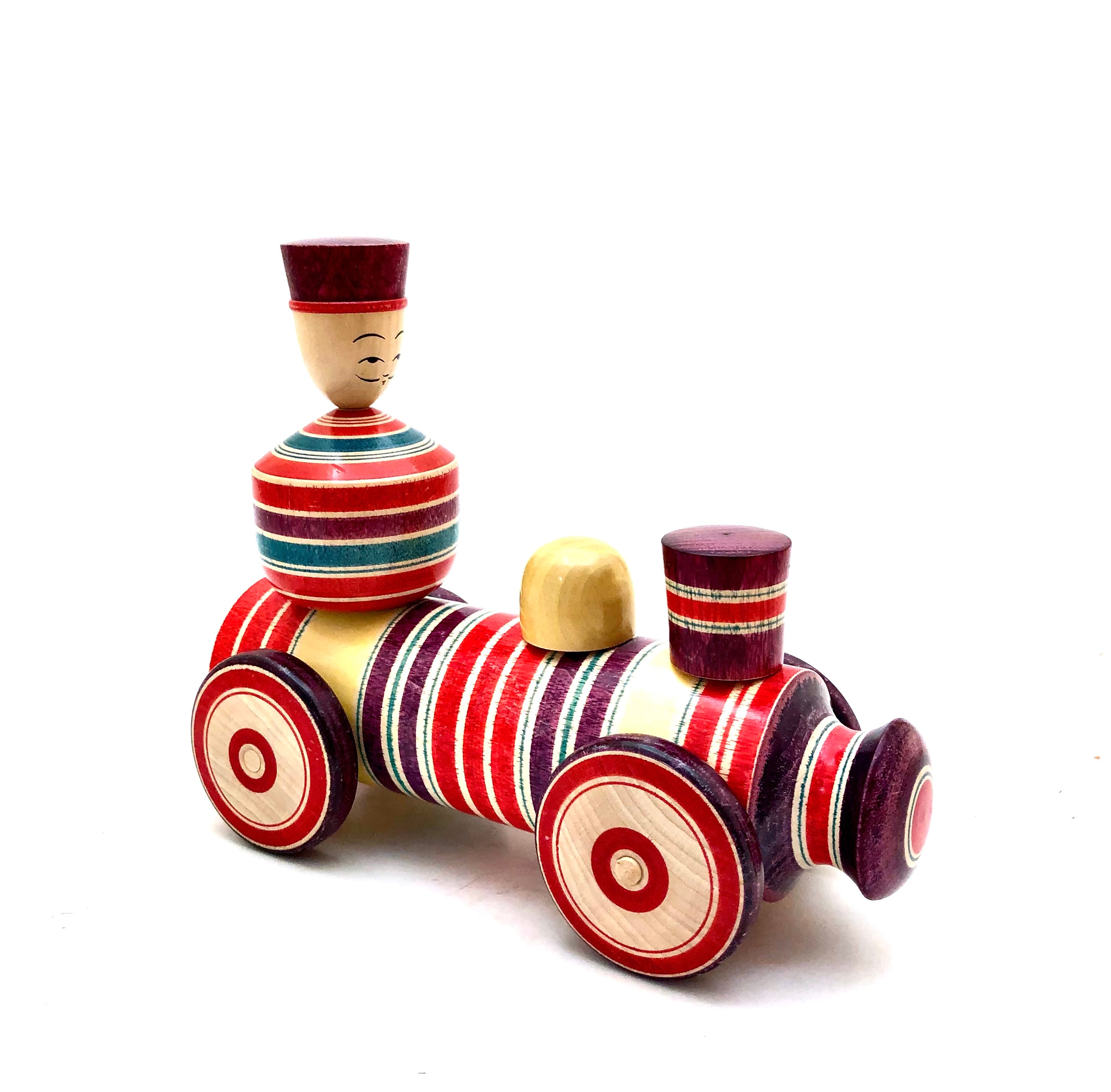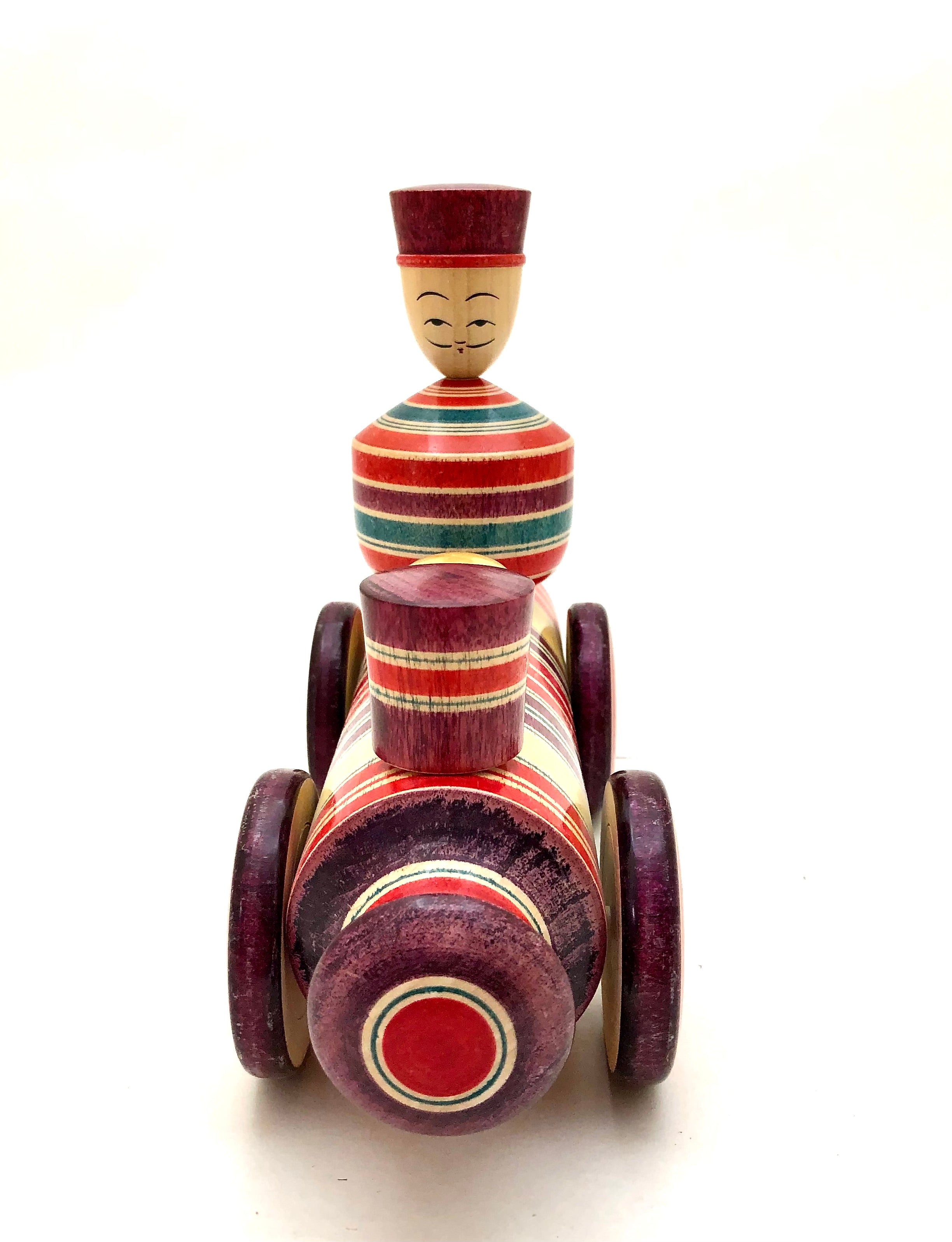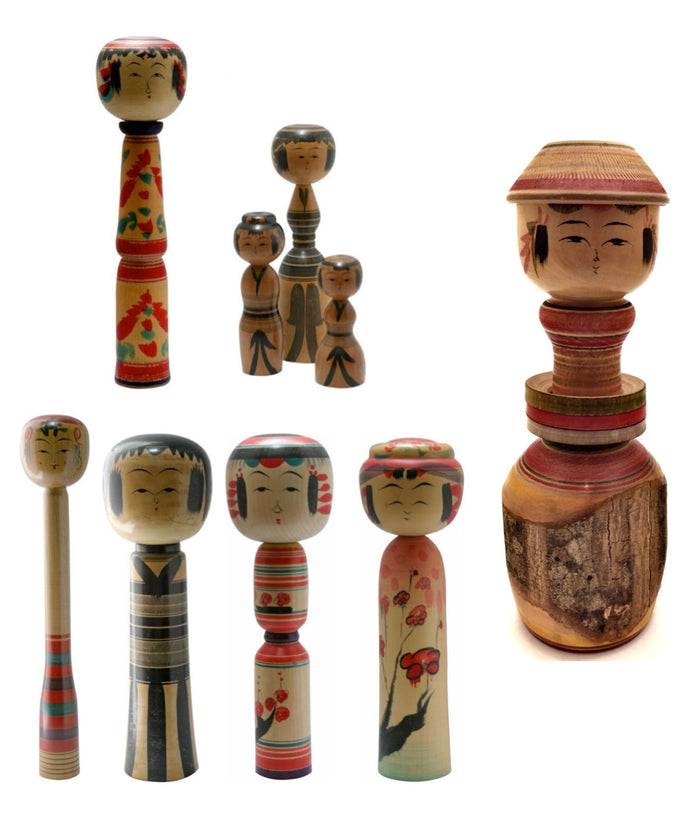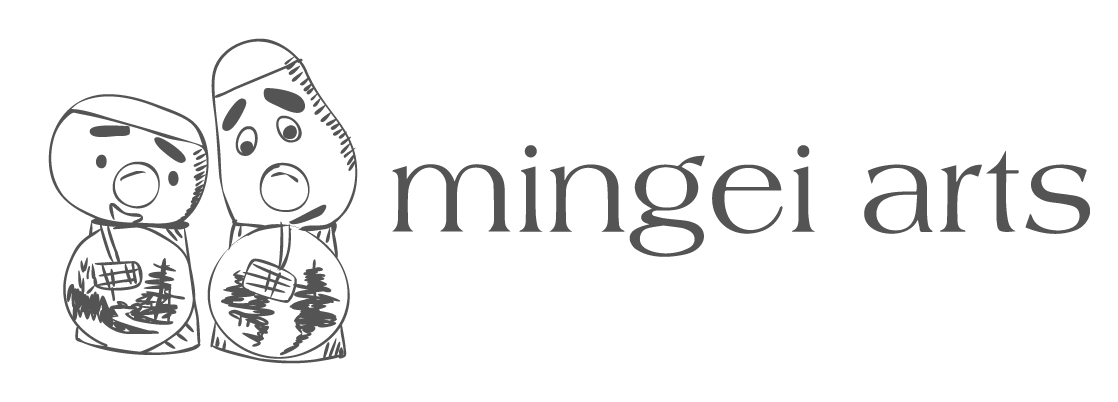


Vintage Japanese Wooden Yajirou Toy Train by Niiyama, Tamio | Kijigangu
Dimensions: 6-3/4”h x 8-0”w x 3-1/4”d
Niiyama, Tamio was a traditional Kokeshi craftsman who studied under two family master carvers (Niiyama San and Niiyama Sakyo). This particular piece is exceptionally large for which this type of pull toy was made in various shapes and materials and are among the most ancient toys known in Japan. This vintage Yajirou interactive toy train, referred to as a Kisha for which the creator hail from the small farming village of Yajirou-machi near Kamasaki Onsen in Miyagi Prefecture, once a farming village between two, tall mountains. The kiji-shi, (woodworkers), divided their time between farming and wood-craft and their wives brought these objects to the nearby Kamasaki Onsen to sell their work to tourist staying at the local onsens.
It is intricately carved and assembled with all the necessary parts to identify it as a train, (boiler, smoke stack, and the engineer with full facial details and hat. It is painted in a veritable rainbow of colors, (red green and purple) which are typical of the Yajirou Family dolls and toys. The artist utilized the Rokoru mono style of decoration incorporating vertical stripes running around the body of the train. The face of the train master incorporates one eyelids with eyebrows and a cat shaped nose. This piece is made from white dogwood, (mazuki). Its wheels and affixed with wooden dowels and turn freely as designed to enable pulling or pushing by the child. There are no other moveable parts. The artist has signed the piece on the back of the train.
See our Vintage Japanese Toy Section for those who want to start or expand their collection, Japanese toys and tops continue to be a sought-after categorized as highly collectible artifact: https://mingeiarts.com/collections/yajirou-kei-family, as well as our e-book entitled: A Collector’s Guide: Traditional and Creative Kokeshi and Toys: https://mingeiarts.com/collections/our-books/products/a-collectors-guide-traditional-and-creative-kokeshi-and-toys.
Condition: Excellent, unused, mint condition meaning that the piece retains its original craft/workmanship and functions as intended, showing a wonderful-developed patina and is void of damage, cracks, breakage, or repairs and meets all the standards of the collectible Vintage Traditional Kokeshi Toys.

Japanese Traditional Kokeshi
Yajirou-Kei (Family)
Prefecture: Miyagi
Origin:
This strain of Kokeshi is said to have been an offshoot of the Tougatta strain and is far less refined. That eventually developed into a unique style that remains today. The creators of these dolls hail from the small farming village of Yajirou-machi near Kamasaki Onsen, in Miyagi Prefecture, once a farming village between two tall mountains. The Kiji-shi (woodworkers) divided their time between farming and woodcraft. Those who made kokeshi in their spare time sent their wives to the nearby Kamasaki Onsen to sell their work to tourist shops and onsens.
Collector's note – characteristics/painting style:
The majority of this style has distinct waists, or (kubire), where the body tapers inward, with a wider, flared base similar to a kimono, thus making them very stable. The upper body usually has a hand-painted collar with horizontal stripes encircling the body, as in the Rokoru-moyo style, and vertical stripes running below the waist to the base of the doll. However, Yajirou dolls can also be found with a series of chrysanthemum petals running down the front of the body, or a branch of plum blossoms, as the only decoration. Yajirou dolls are some of the most brightly painted of the traditional family group. Utilizing a veritable rainbow of colours, from the usual red and black to green, yellow, and even blue and purple, they are available in probably the widest range of shapes. Some also have a painted beret-like feature or a bun on their heads, similarly painted with a red center spot. Less common are Yajirou who have conical hats known as Suge-Gasa. Typically seen is one lid or double eyelids and a cat or pick-shaped nose. Yajirou kokeshi have been made from cherry wood, camellia, and maple, but the preferred wood is white dogwood, (Mizuki). And finally, both Yajirou and Tougutta dolls are sometimes created with loose rings circling the waists. Carved from the same wood as the body, which is a very meticulous method! This treatment is referred to as 'Yamiyo' style kokeshi.

Leading, Craftsmen:
Niiyama, Keimi, 1925, (Shirabu, Yamagata) - Master Niiyama, Keimi. No additional published information
Niiyama, Fukutaro, 1898-1965 - No additional published information
Niiyama Fukuo, 1922, (Yajiro Shironishi, Miyagi) - Master: Niiyama, Fukutaro. No additional published information
Niiyama, Hisaharu, 1942-2008 - No additional published information
Niiyama, Sanai (Master) - No additional published information
Oizumi, Kiyoni - No additional published information
Saito Masao, 1932, (Shiroishi, Miyagi) - Master: Sato, Tsugio. No additional published information
Sato Tatsuo, 1928-2009, (Yajiro Shiroishi , Miyagi) - Master: Sato, Imasaburo. No additional published information
Sato Yoshiaki, 1936, (Shiroishi Miyagi) - Master: Sato, Tatsuo. No additional published information
Sato, Koichi, 1936, (Shiroishi, Miyagi) - Master:Hamatsu, Heisaburo. No additional published information
Explore & Learn More about Yajirou-Kei (Family)